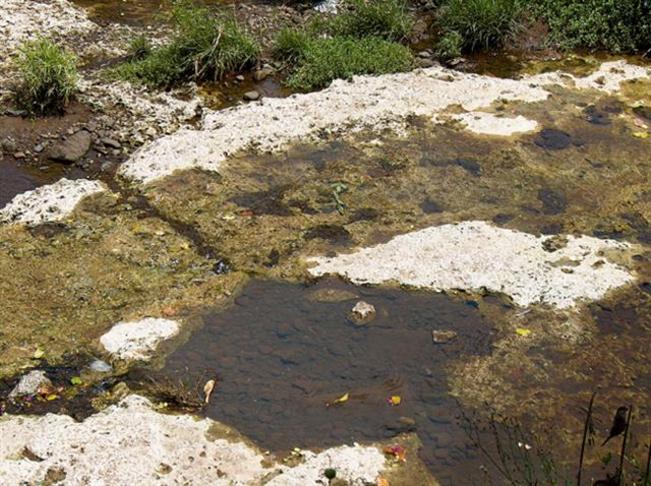Even the most rudimentary plumbing was unknown before Captain Cook’s arrival. The ancient Hawaiians depended on streams and springs for their water supply, sometimes carrying calabashes of water great distances over rugged terrain. They bathed in streams, mountain pools, ʻauwai (irrigation ditches,) shore pools and the sea. (Schmitt)
In the late-19th Century, Waikīkī’s shoreline was mostly a day-use beach; overnight accommodations were scarce. Visitors, usually residents of Honolulu, would arrive via horse-drawn carriage, on horseback or in a canoe. (White)
“The most popular resort of the people of Oʻahu is the famous Waikīkī … Waikīkī is the seaside and pleasure-resort of the island. … There are a number of private residences, picturesque-looking bungalows and cottages, but all airy, comfortable, and close to the murmuring sea. A beautiful grove of towering coconut-trees adds to the tropical charm of the place.” (Musick, 1898)
“The sea bathing is simply perfection. The water is never chilly; and yet it is most healthful and invigorating. The bottom is of nice smooth sand, always warm and pleasant to the feet. There is no fear of undertow or of any finny monsters. Not only is it pleasant to bathe here during the day, but moonlight bathing is indulged in. … It is a novelty, worth seeing, if not worth trying. (Whitney, 1895)
Just as “sea bathing” were gaining popularity on the American and European continents, private bathhouses, like the Long Branch Baths, Ilaniwai Baths and Wright’s Villa, began to appear in Waikīkī. (White)
“Bath-houses that equal those in Long Branch (New Jersey) are found here, and sea-bathing in January is as pleasant as in July. There is no clearer water, no finer beach, no smoother bottom in any of the many famous watering-places than are found at Waikīkī.” (Musick, 1898)
Bathhouses served customers with bathing suits and towel rentals, dressing rooms and each access to the beach. Initially, bathhouses served only day-use recreation of visitors, but eventually some of them began to offer overnight rooms.
One of the first of these bathhouses was the “Long Branch Baths,” named after a popular New Jersey resort. This long wooden shed was built near the edge of ‘Āpuakēhau Stream by James Dodd in 1881 at the former residence of Kākuhihewa. (CulturalSurveys)
“There are now forty two dressing rooms for gentlemen and eighteen boudoirs for ladies. To these accommodations will be added a bathing platform 100-feet along the beach by 80-feet wide and a trapeze and spring board attached. There will also be a restaurant and when the whole is finished we may expect to have occasionally to report aquatic feats of considerable magnitude.” (Hawaiian Gazette, May 28, 1889)
At that time, the Waikīkī beach area in Ulukou and Kahaloa was dotted with small cottages and some bathing houses. These “bathing houses,” placed strategically near the beach, were places where people could change into their bathing suits, rent towels, and walk directly into the ocean. (CulturalSurveys)
“At “Long Branch Baths” the bather may find deep water and at a temperature which will surprise him, permitting a two or more, hours enjoyment in plunging and bathing in the pure waters. Here sun and sand baths may be indulged in.” (Godfrey, 1898)
Dodd, who also ran a livery station, also offered round trip ‘omnibus’ mule-drawn bus service from Honolulu to Waikīkī, which included the use of the Long Branch.
Another attraction was a 200-foot long marine toboggan, where “for a nickel, riders could climb a ladder to the top of the run, mount a ‘star oval board’, zip down the chute and ricochet across the water …, skipping along like a flat pebble.” This toboggan was built on the west side of the bathhouse in 1889 by Jim Sherwood, a later owner of the Long Branch Bathhouse.
“The toboggan itself is a wooden frame with a turn up end upon which the bather reclines and the pleasure is in the swiftness of motion over the chute. When the bather reaches the water his toboggan skips on the surface for some distance from fifty to one hundred feet in proportion to the momentum acquired in the descent and then he has to swim ashore and propel his toboggan to a landing.” (Hawaiian Gazette, May 28, 1889)
During the 1870s and 1880s, Honolulu residents in growing numbers went out to enjoy the sea bathing at Waikīkī. Local writers spoke of it as the Long Branch, Newport, Brighton or Trouville of Hawaiʻi. (Kuykendall)
In 1875 or earlier, Allen Herbert proprietor of the Hawaiian Hotel in Honolulu, “provided a cottage at the sea-shore at Waikīkī … where guests can go and spend the day, or merely enjoy a morning or evening bath in the ocean.”
Apparently this was only a beach house and not a hotel for overnight accommodation of guests; it is uncertain how long the arrangement continued. (Kuykendall)
The first hotels in Waikīkī were bathhouses, such as the Long Branch Baths, began to offer rooms for overnight stays in the 1880s. The first beachside hotel, the Park Beach, was a converted home which offered 10 rooms, each equipped with a bath and telephone.
As time passed, more found their way into the district, at first as visitors to enjoy the beach and the sea bathing, and then as residents, especially when access was made easier by the construction of a road (sometime in the 1860s.)
Toward the end of that decade an omnibus began running to Waikīkī, providing the only public transportation to that resort until the tramcar line reached there at the beginning of 1889. (Kuykendall)



























